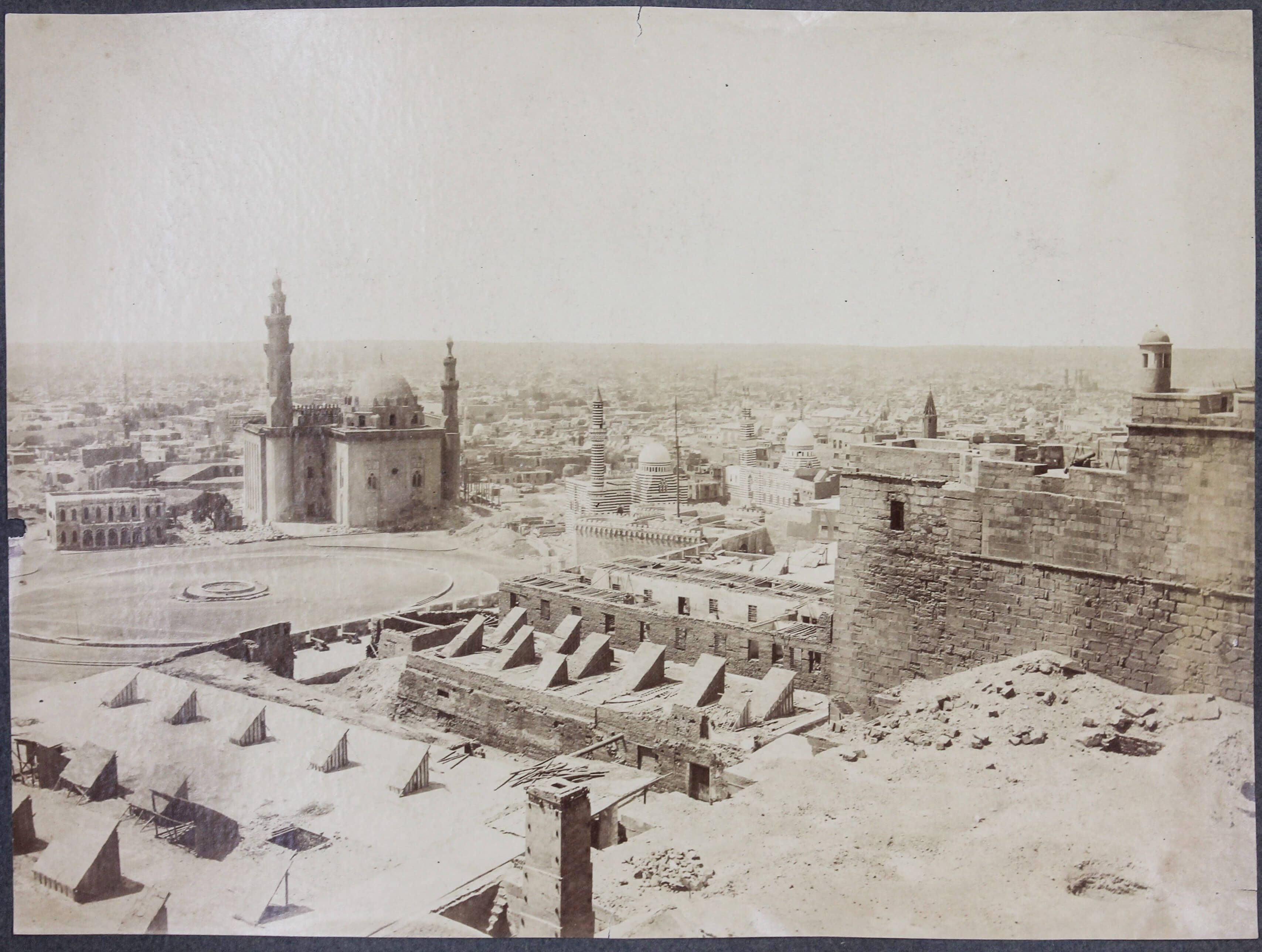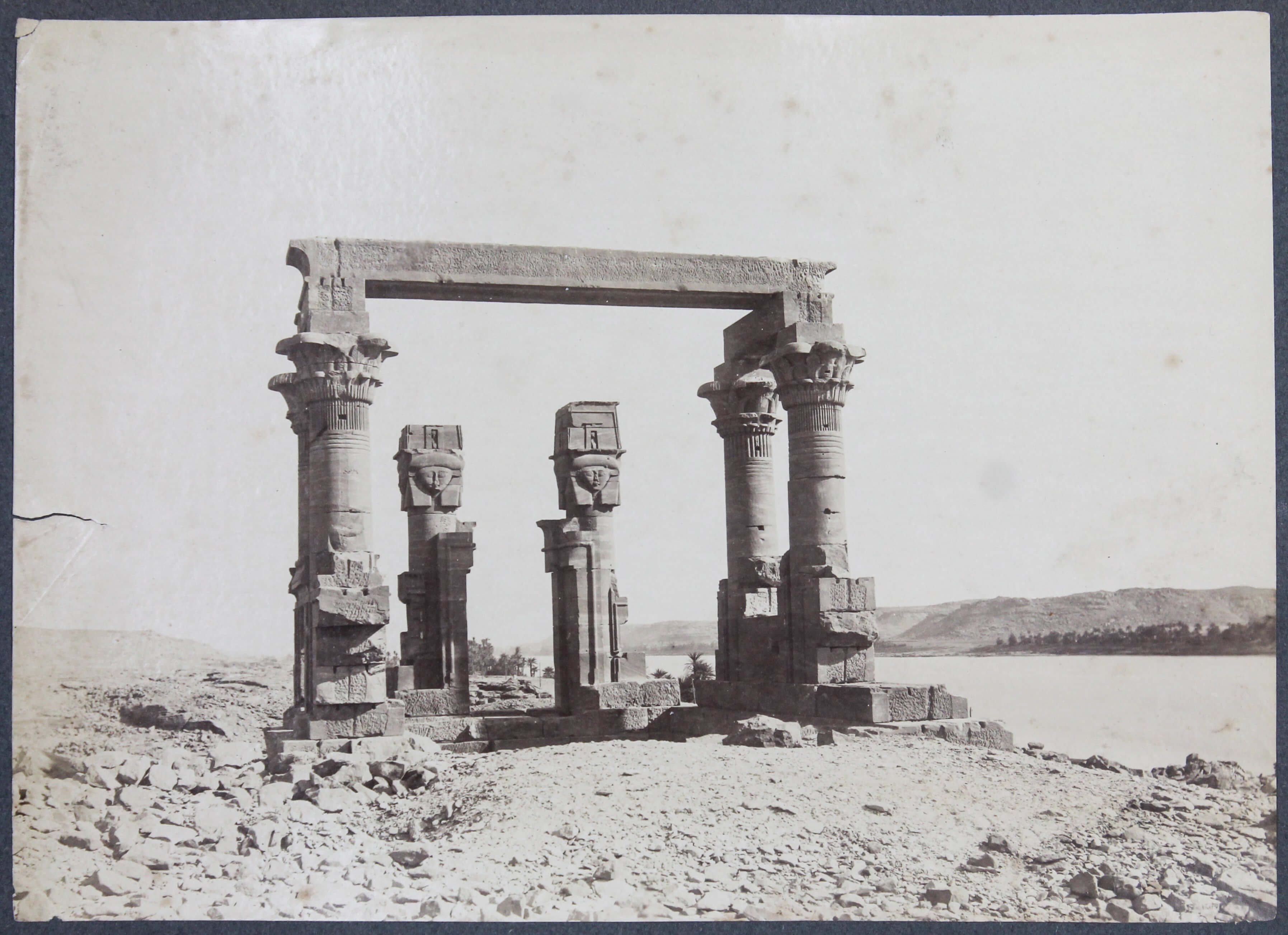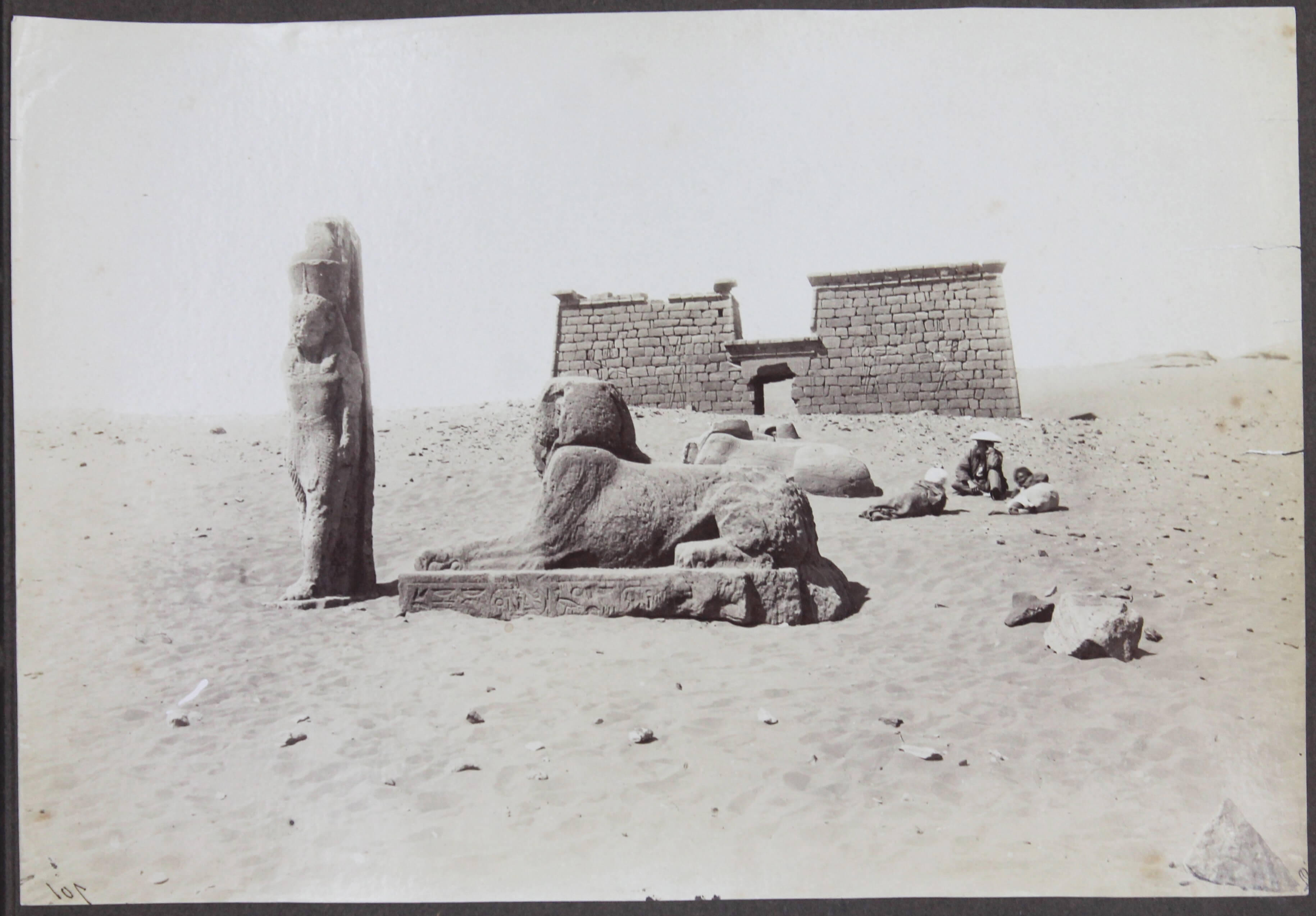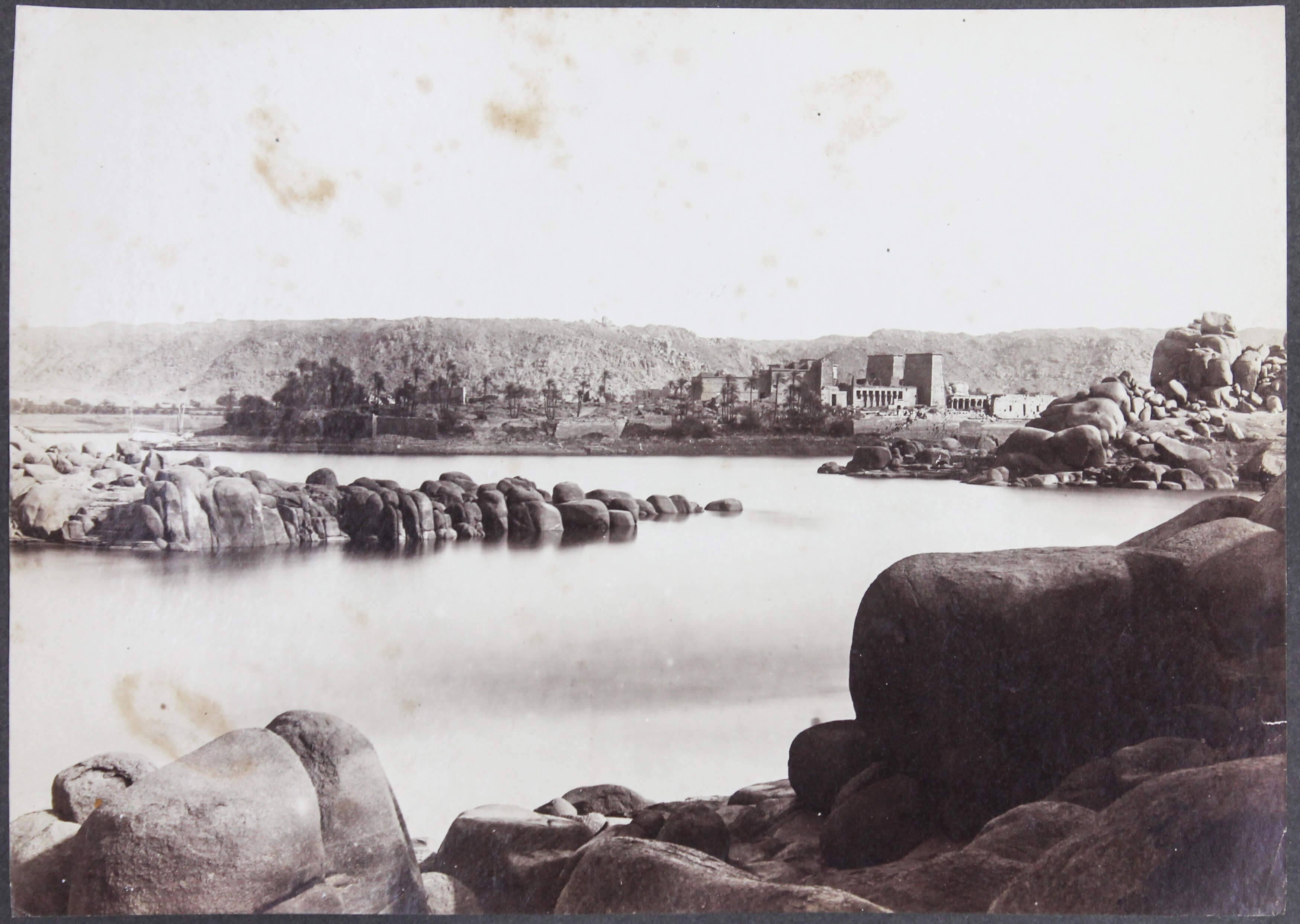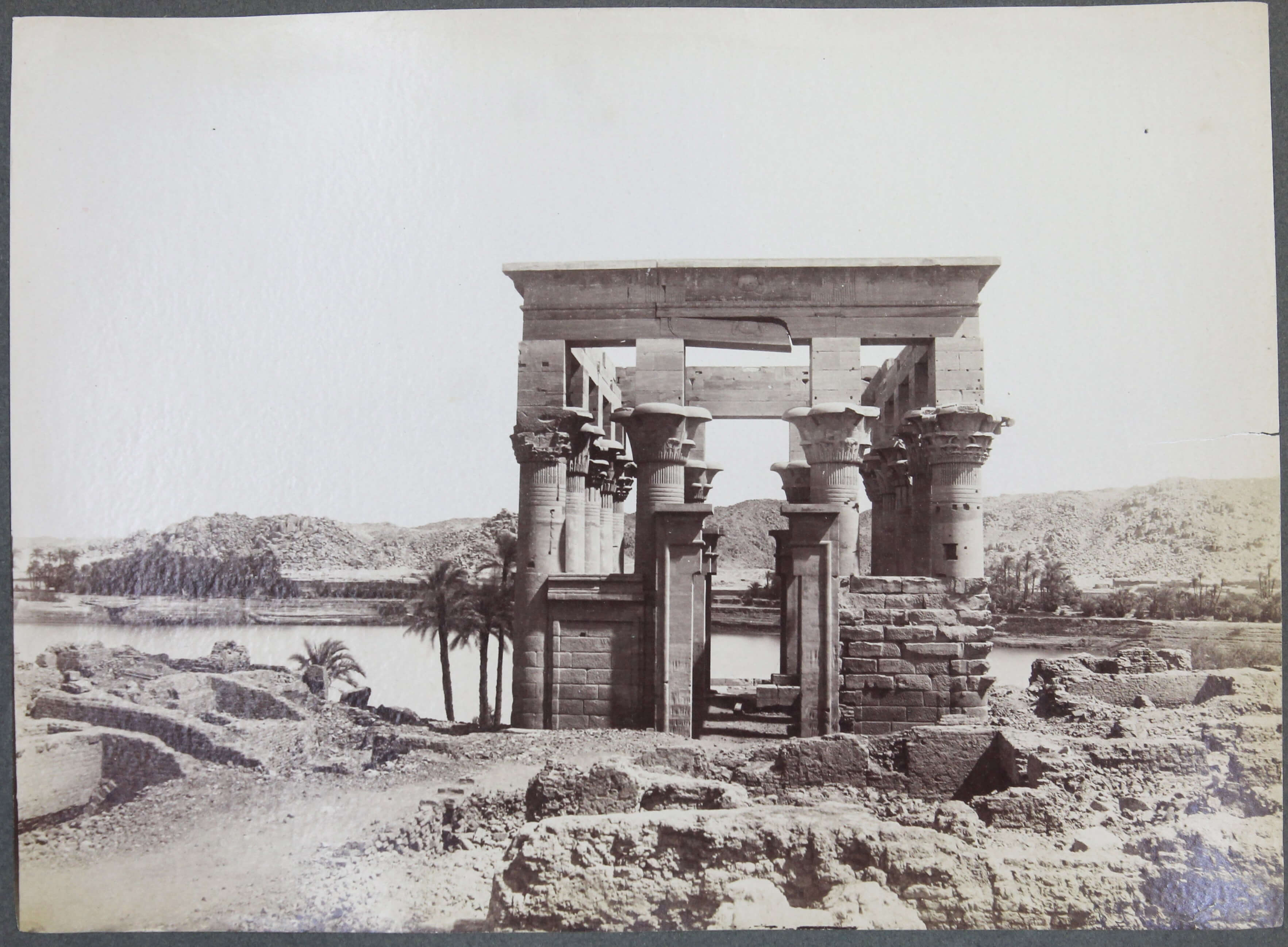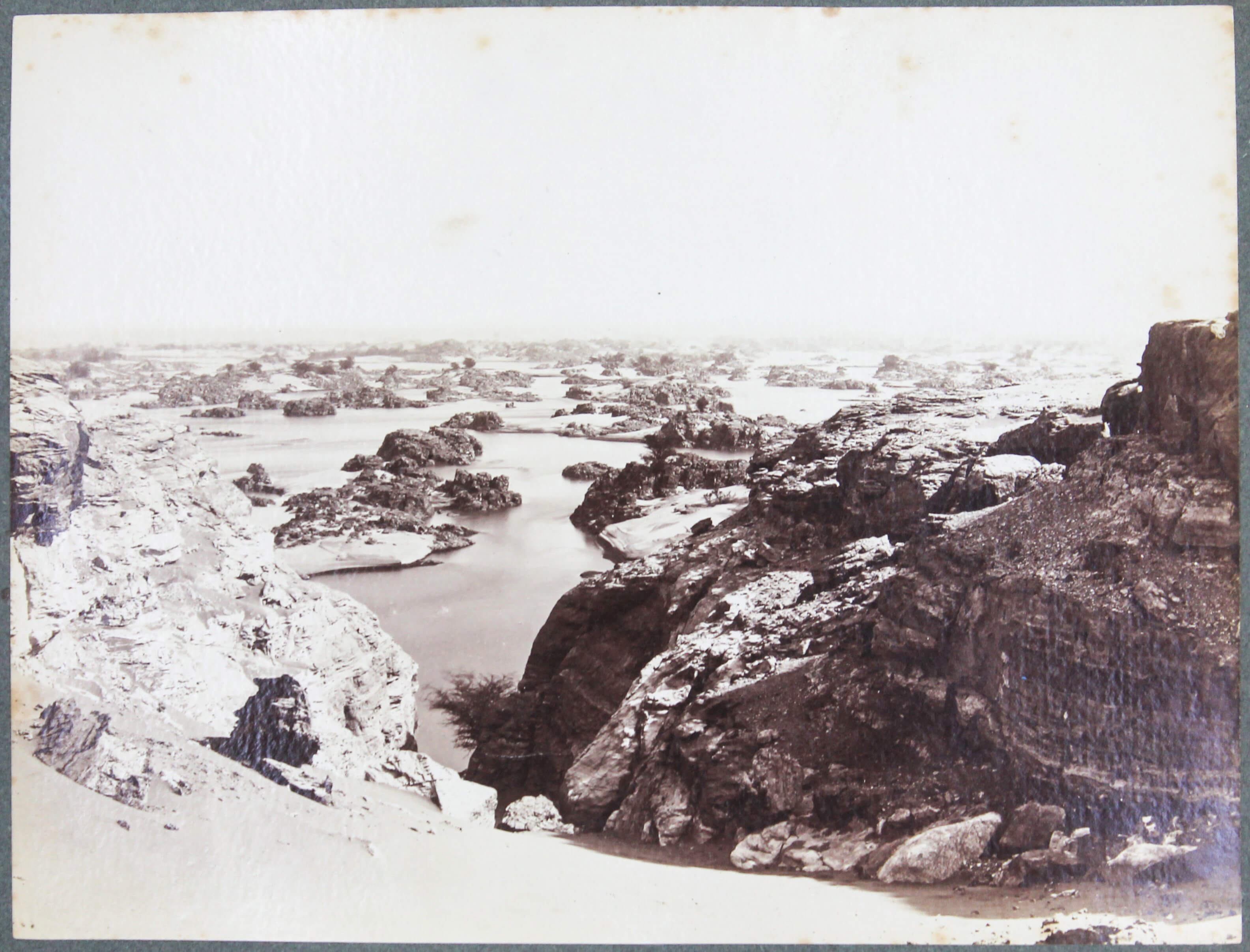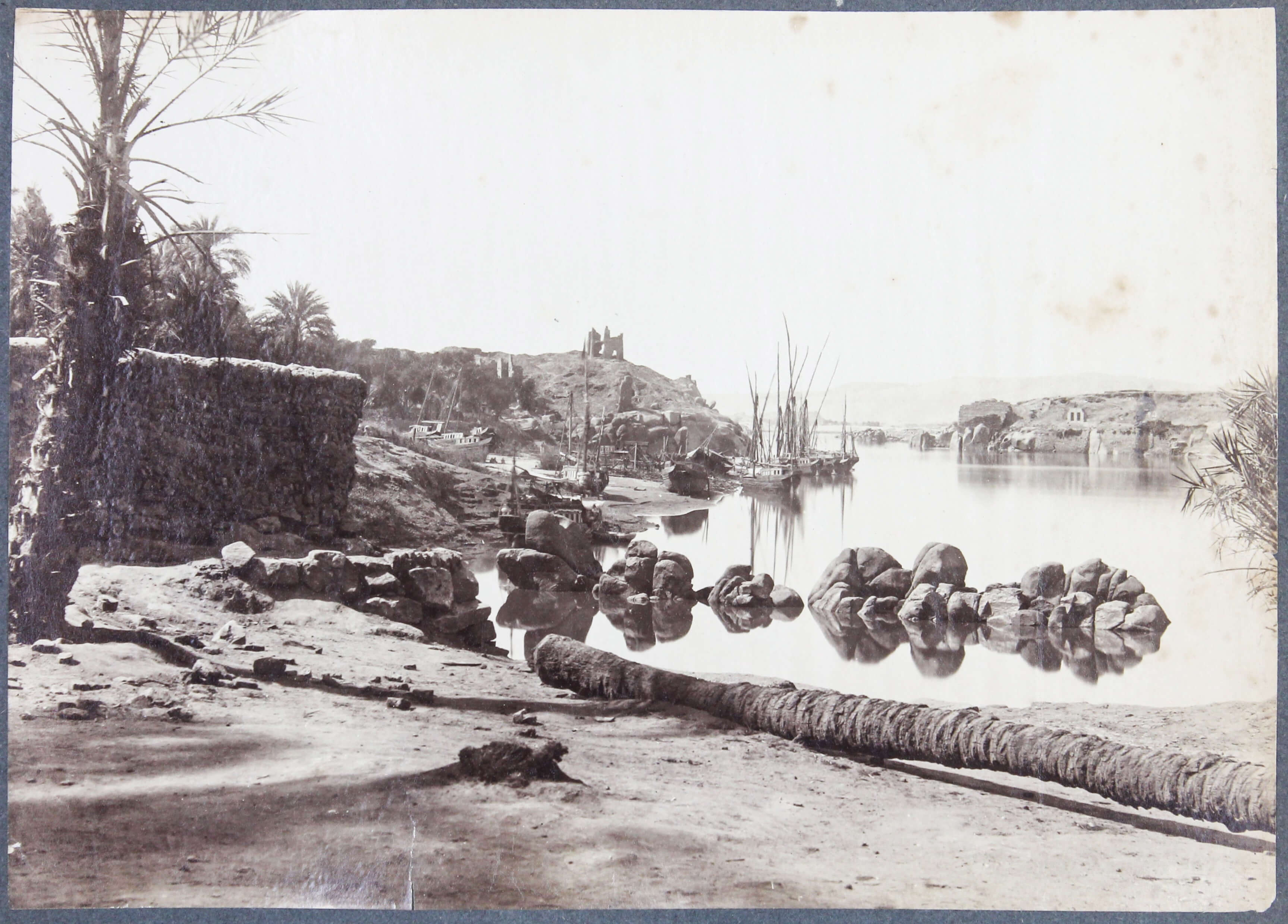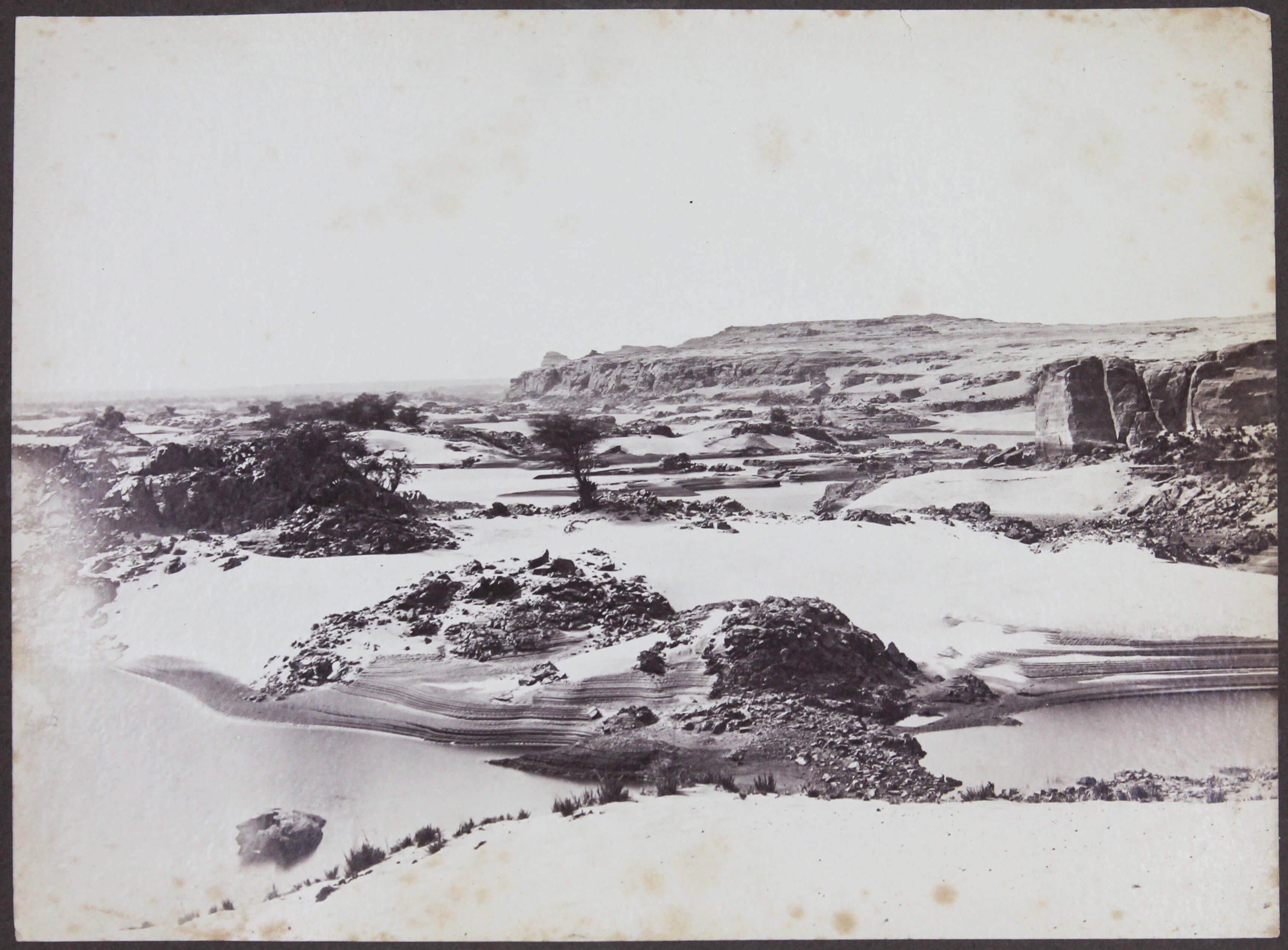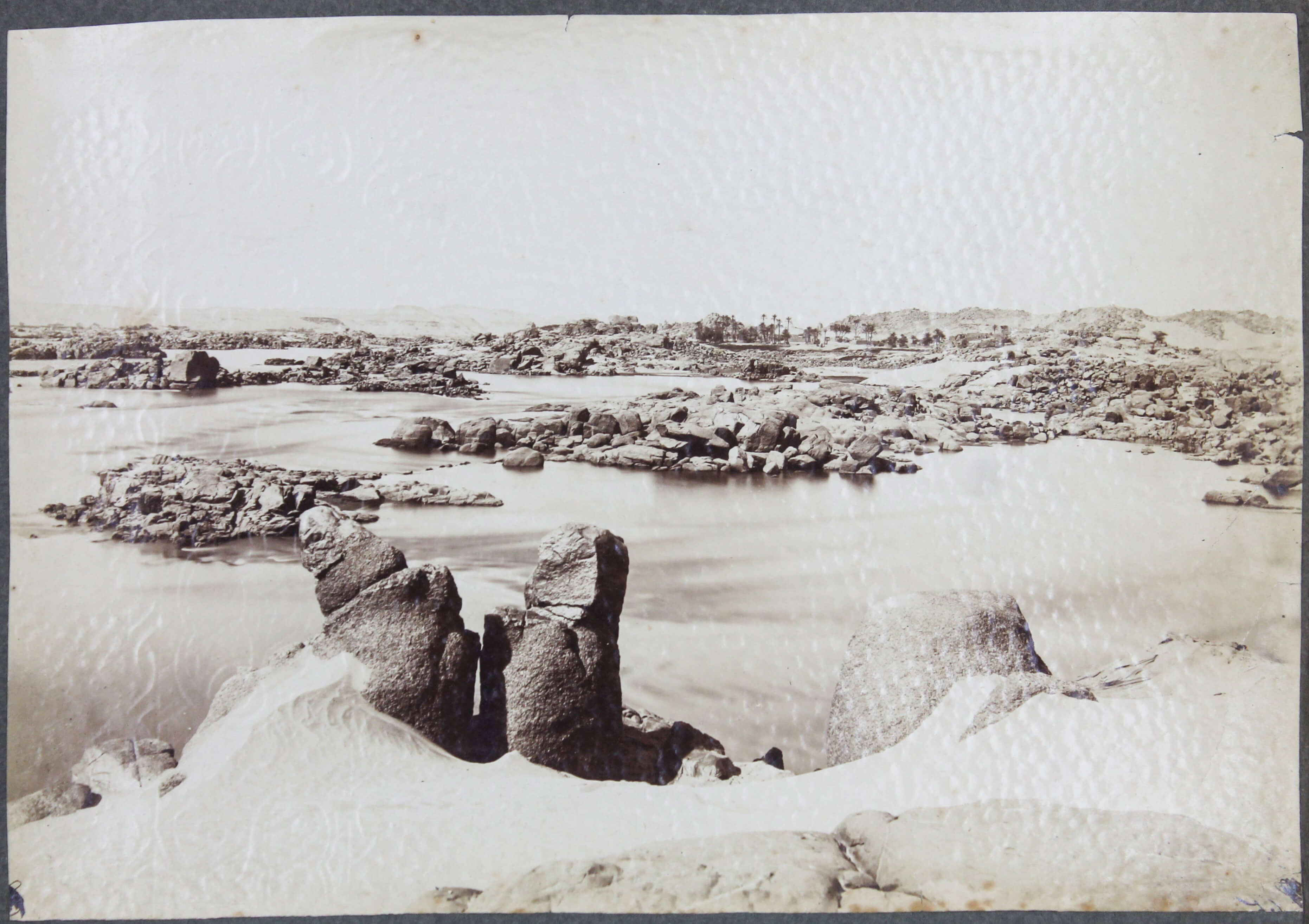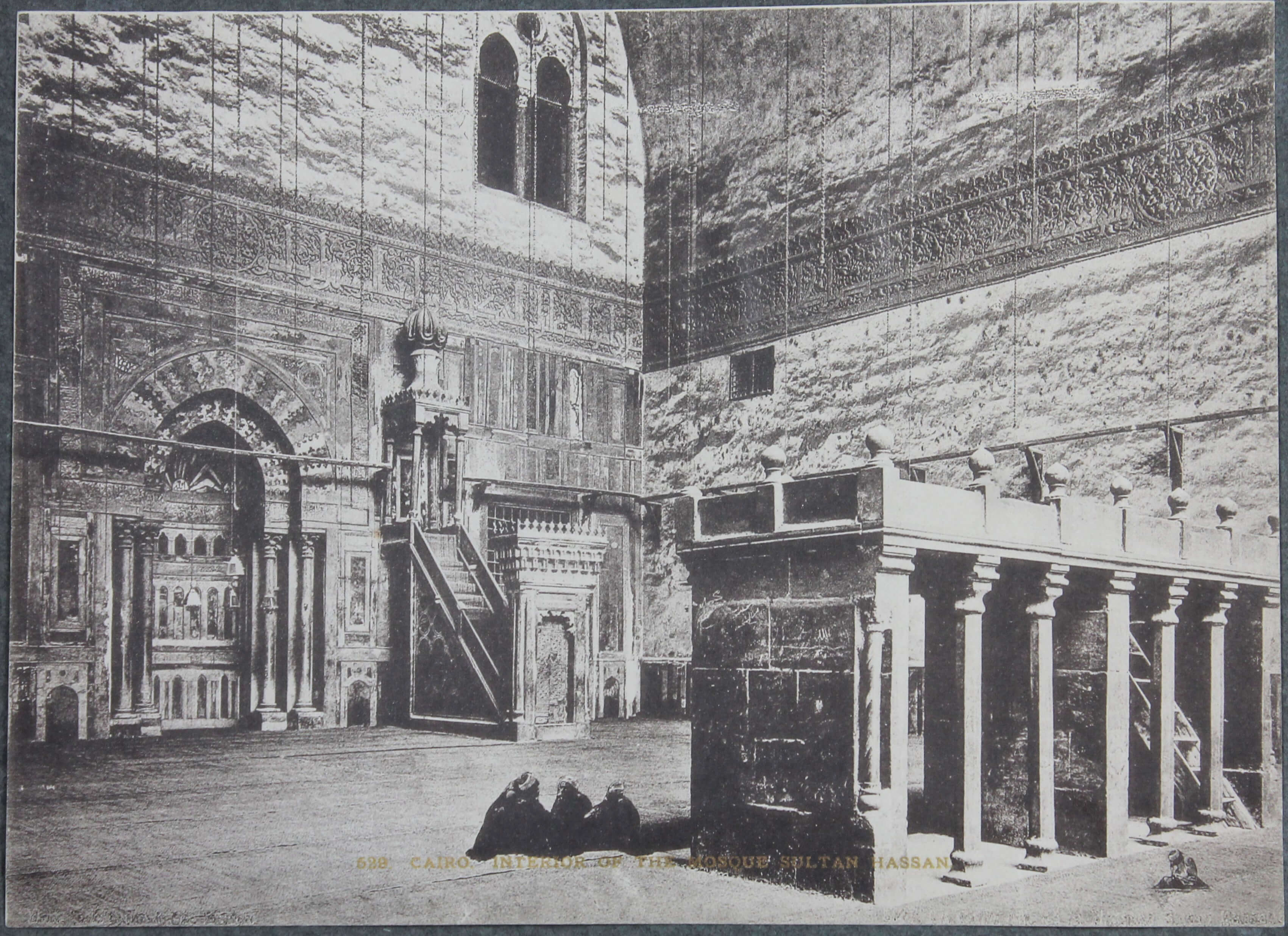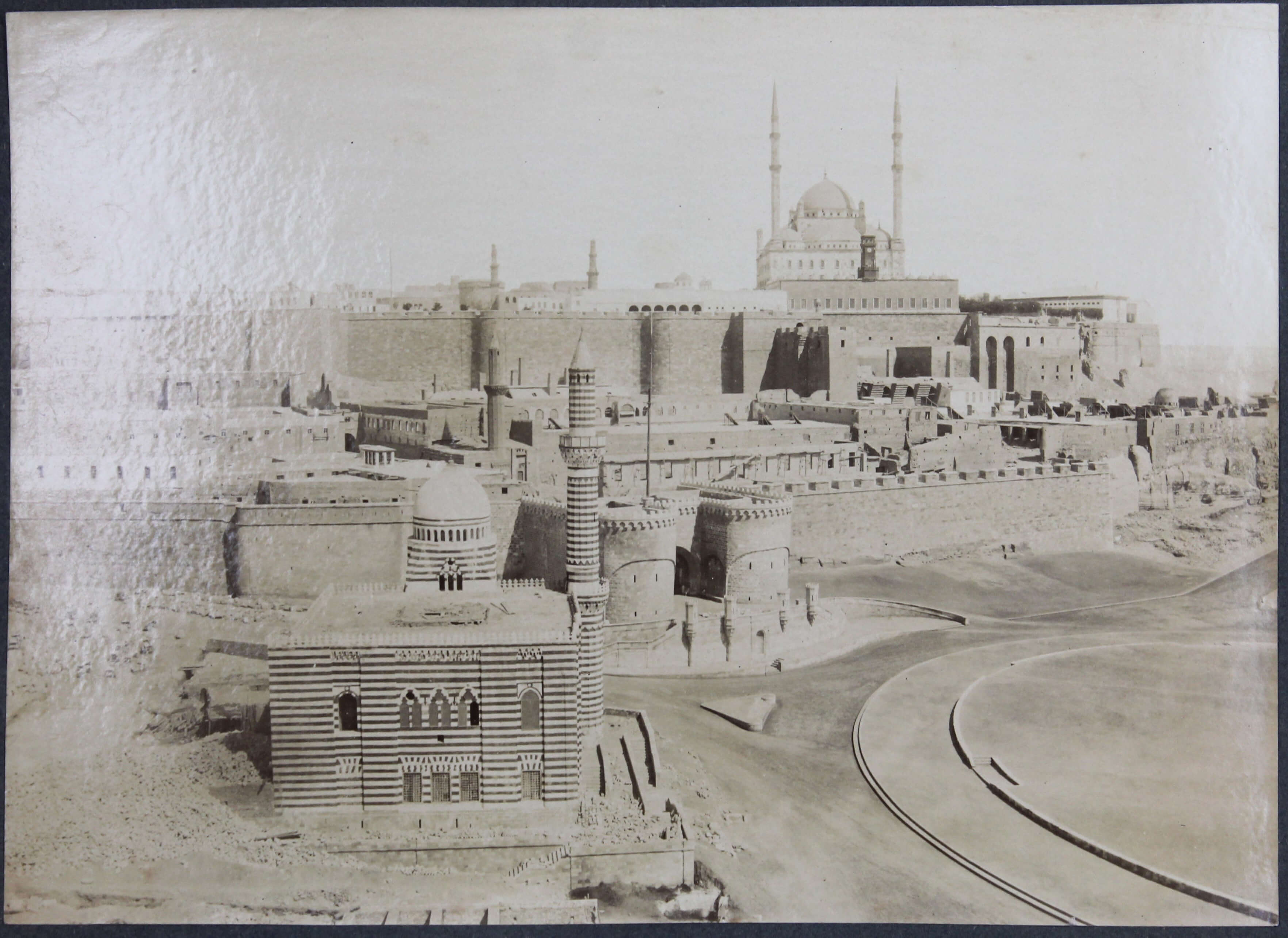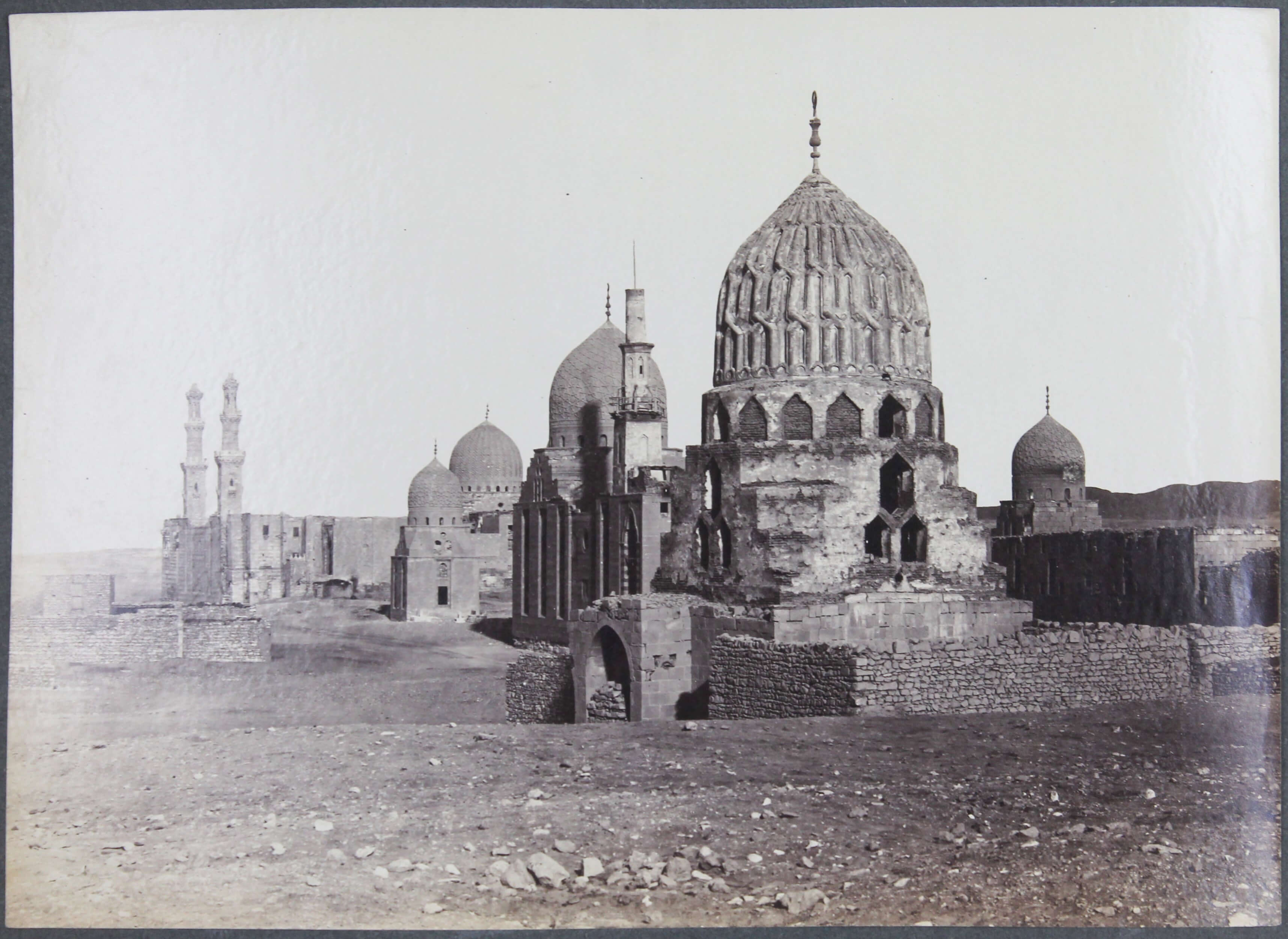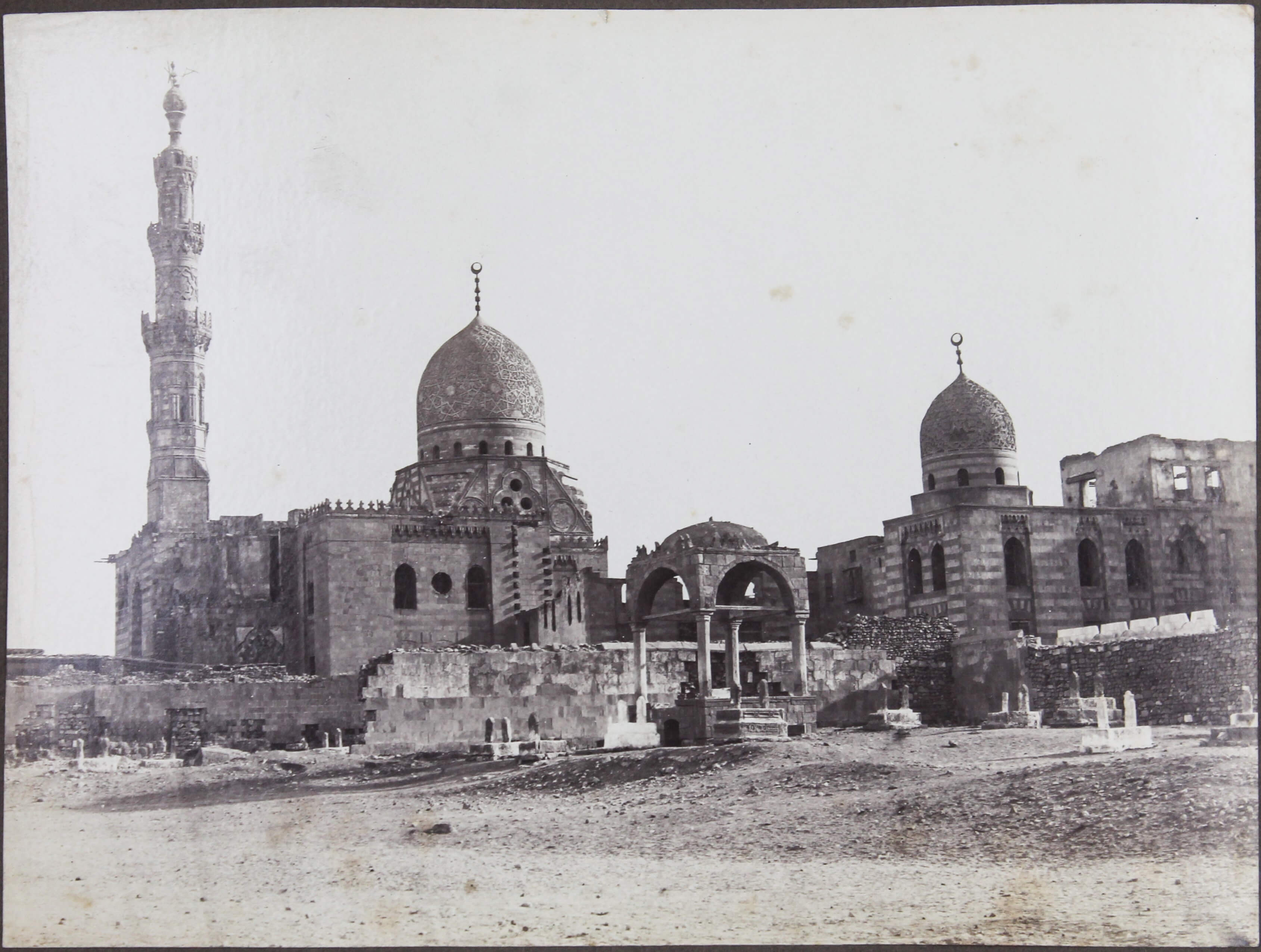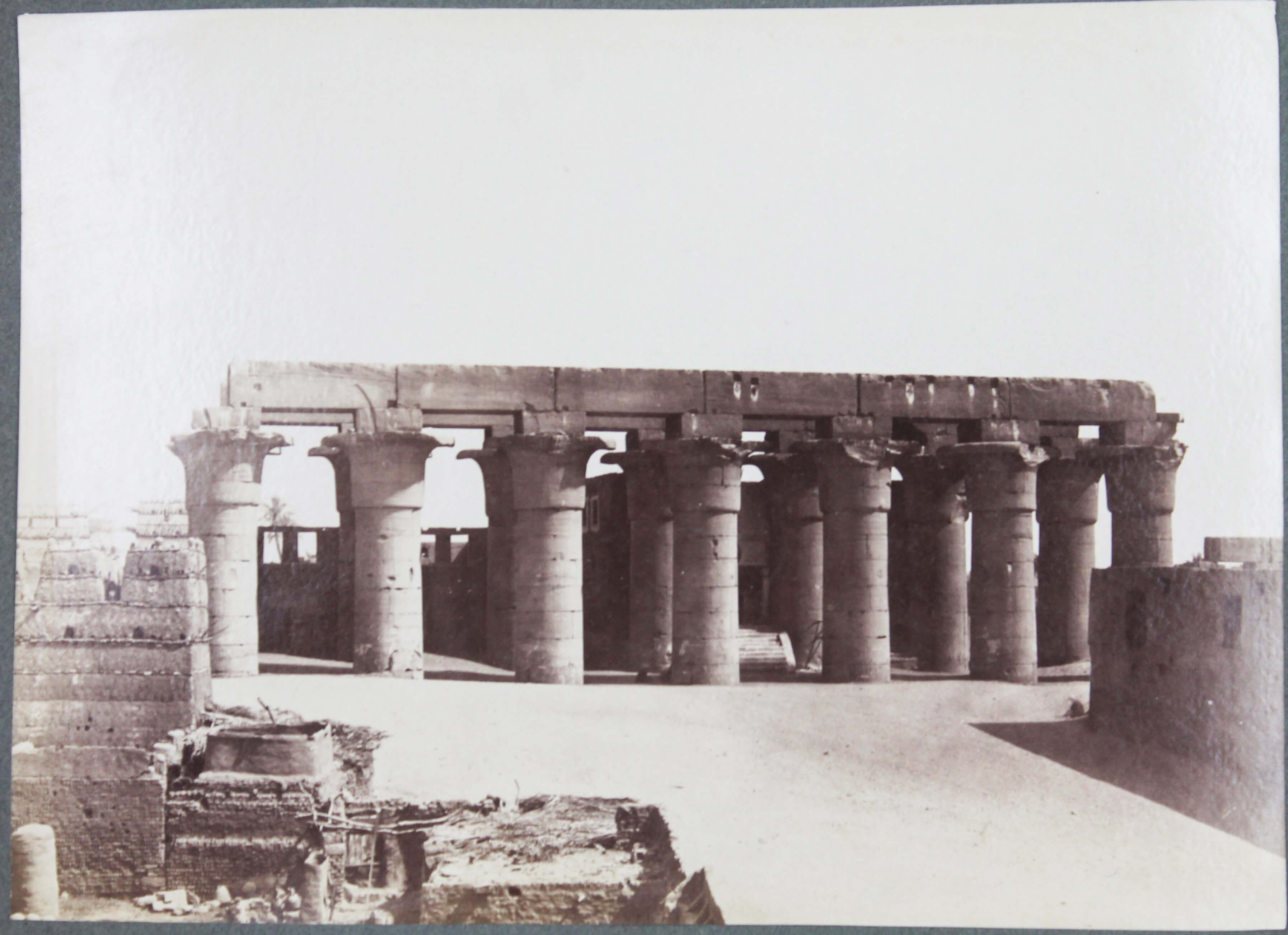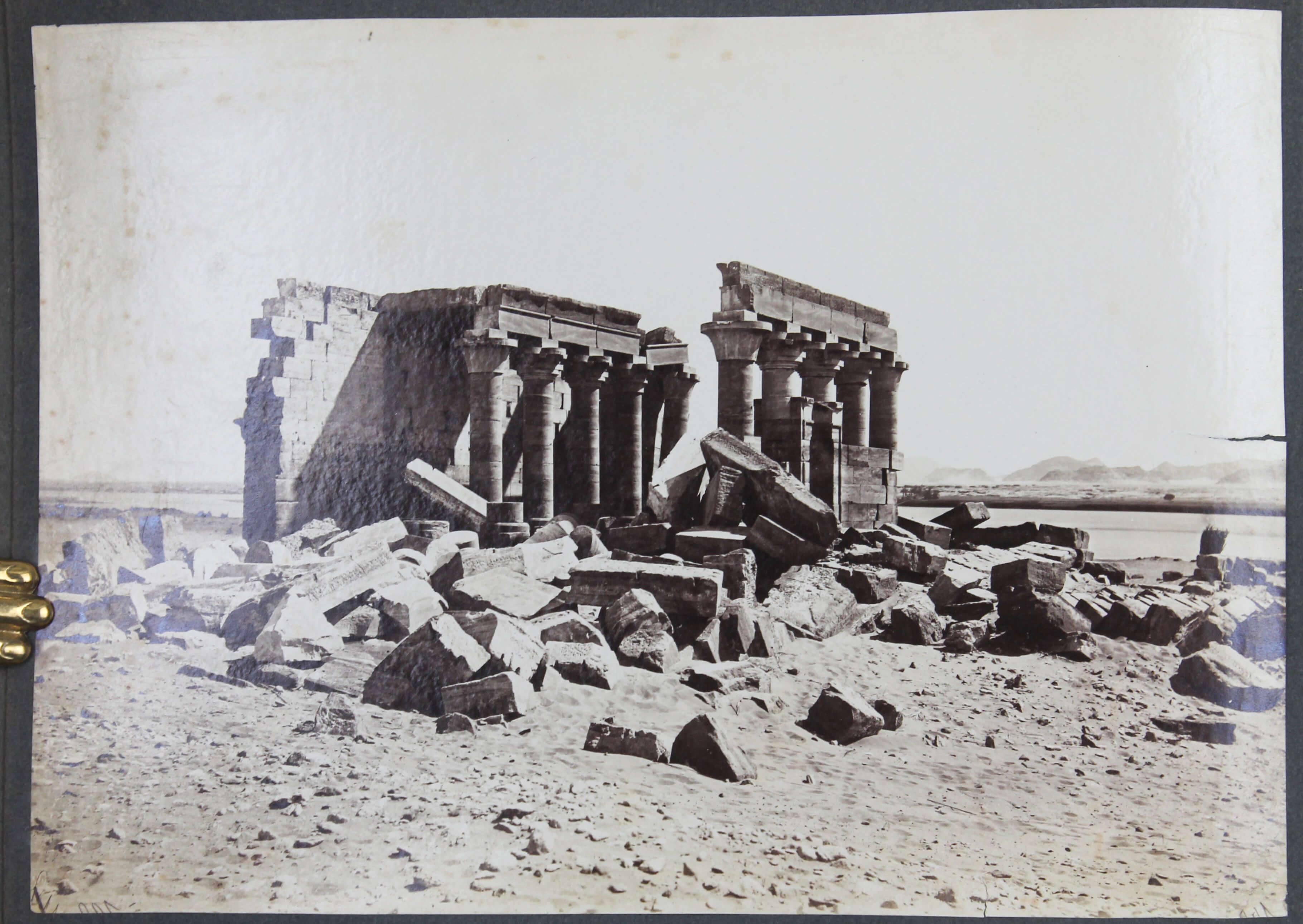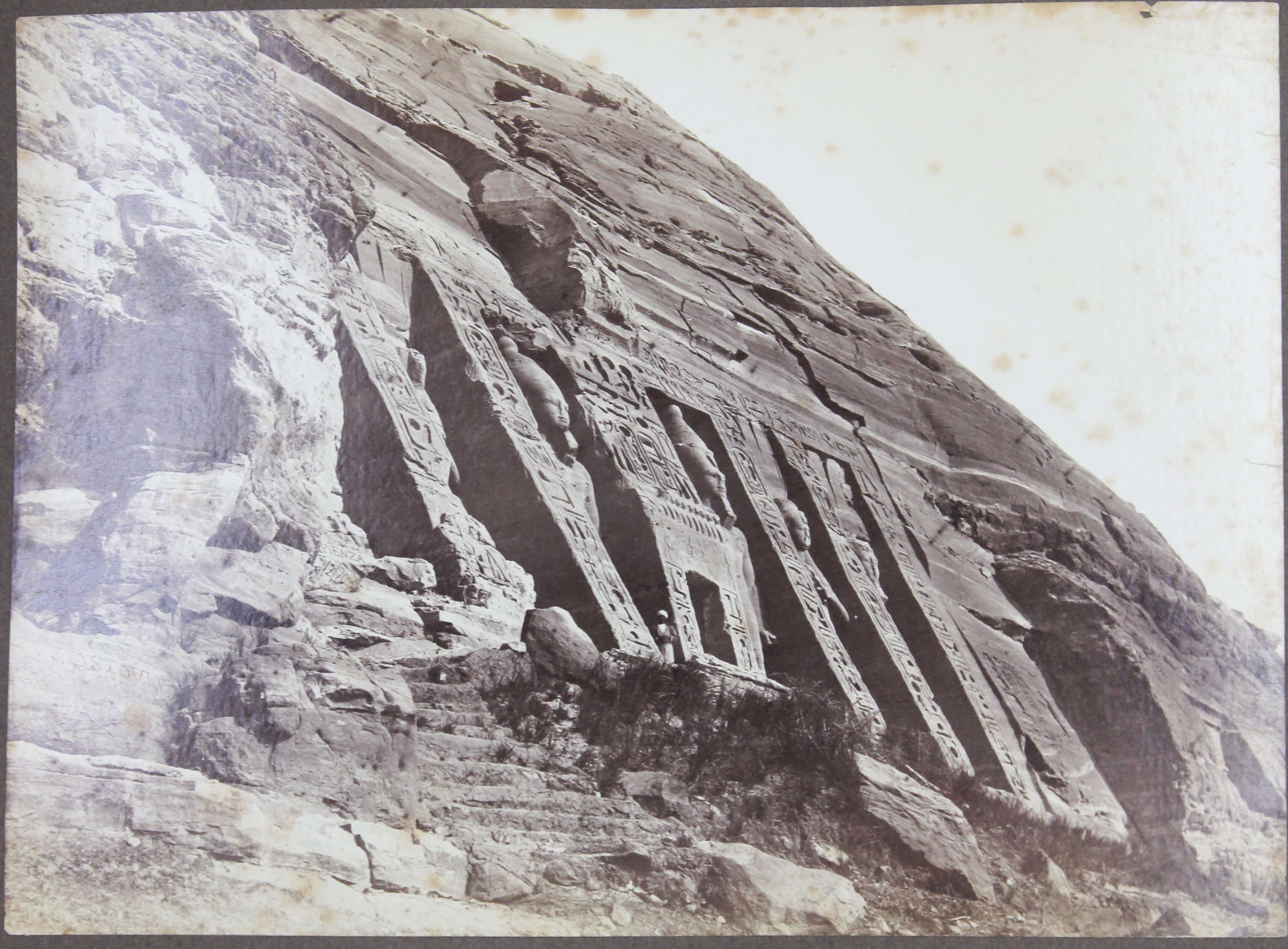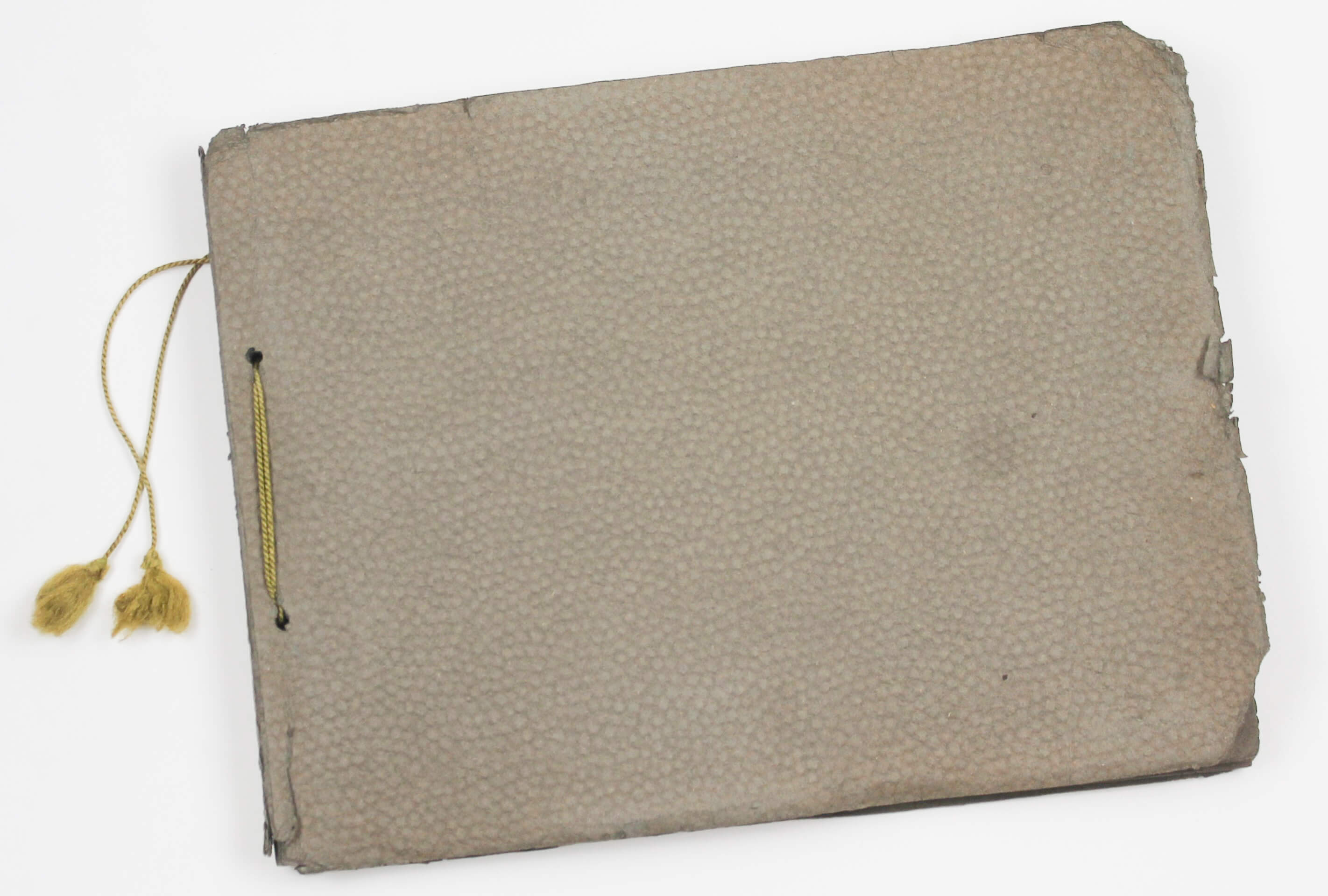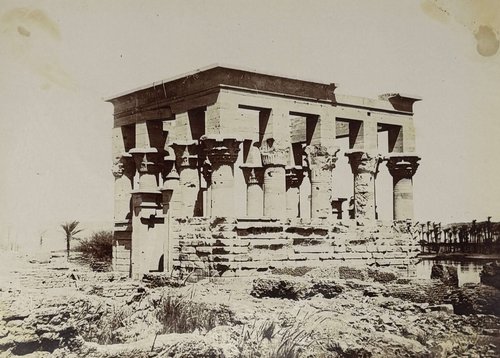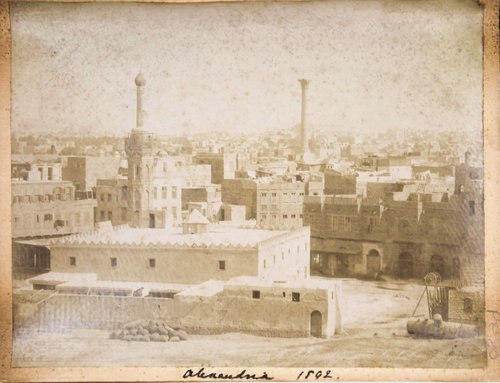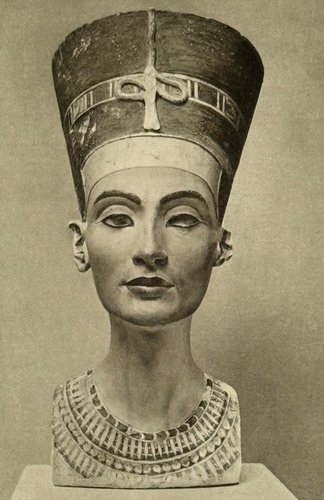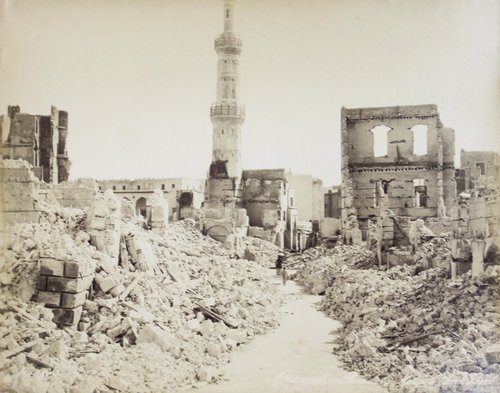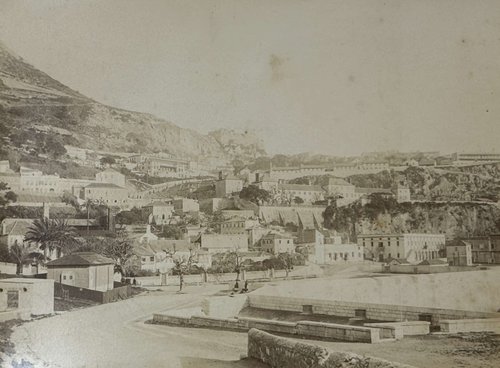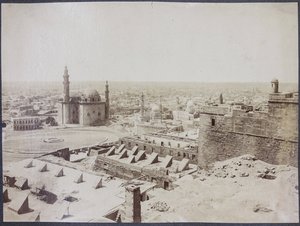
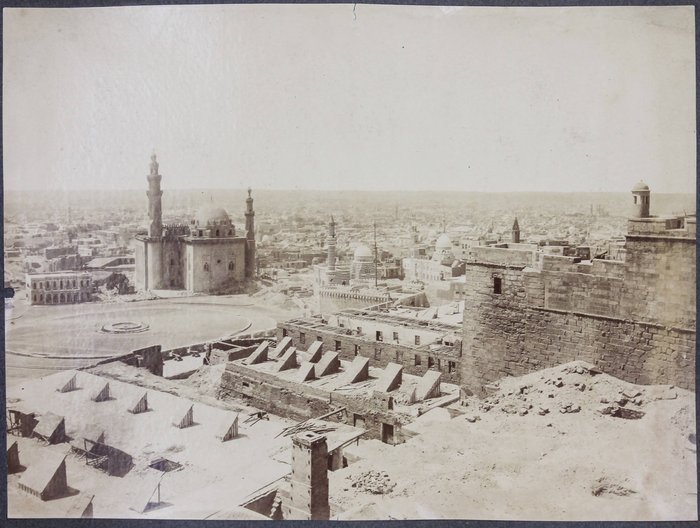
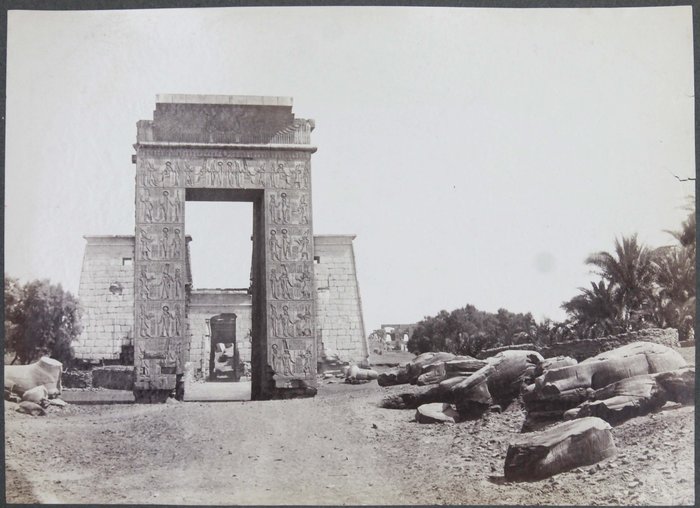
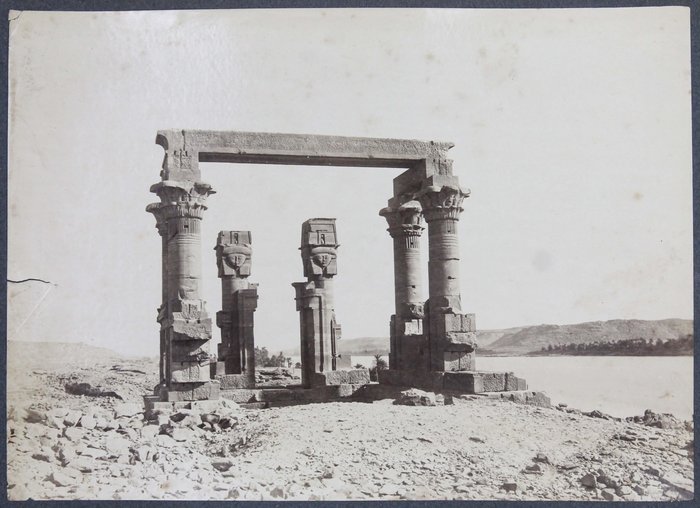

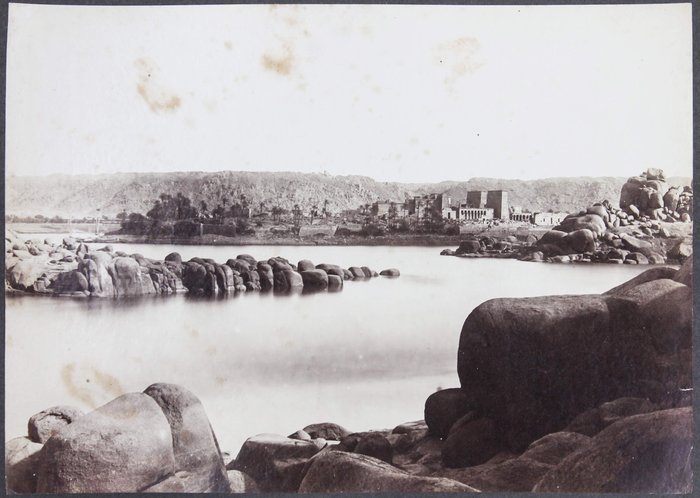
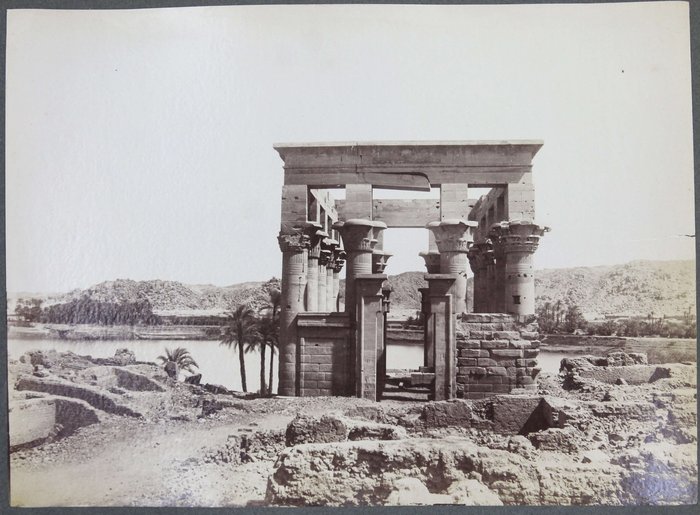
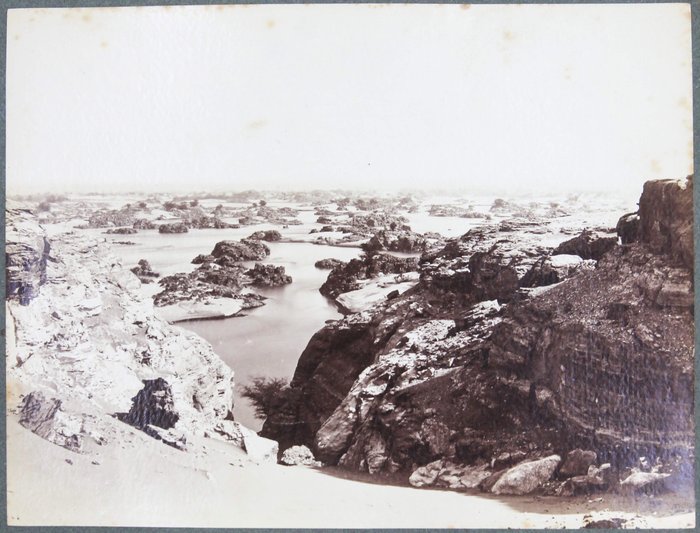
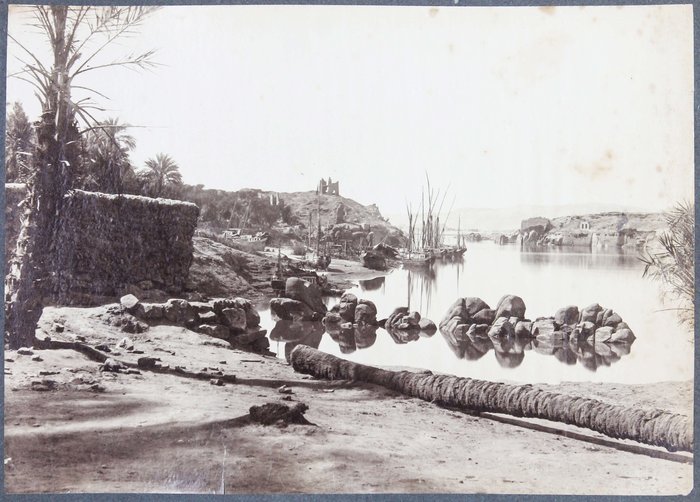
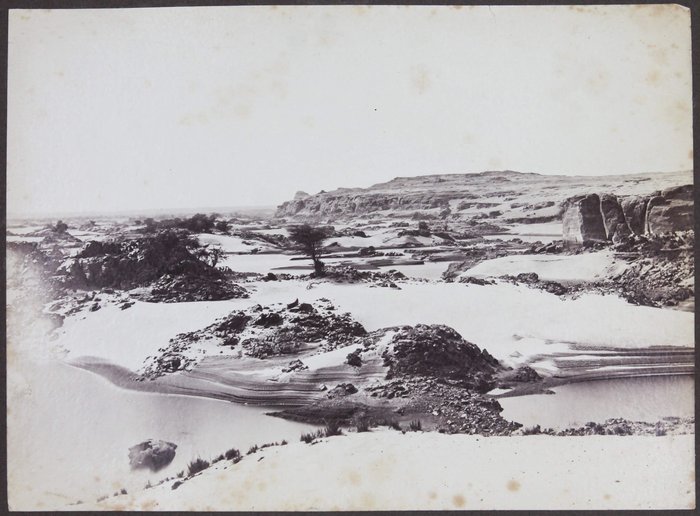
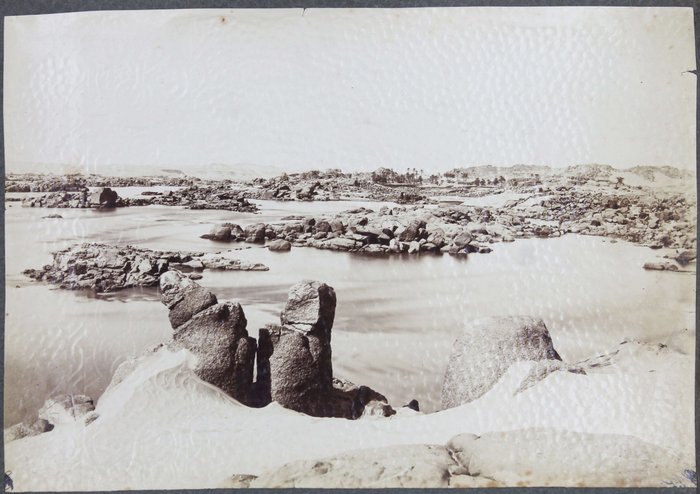
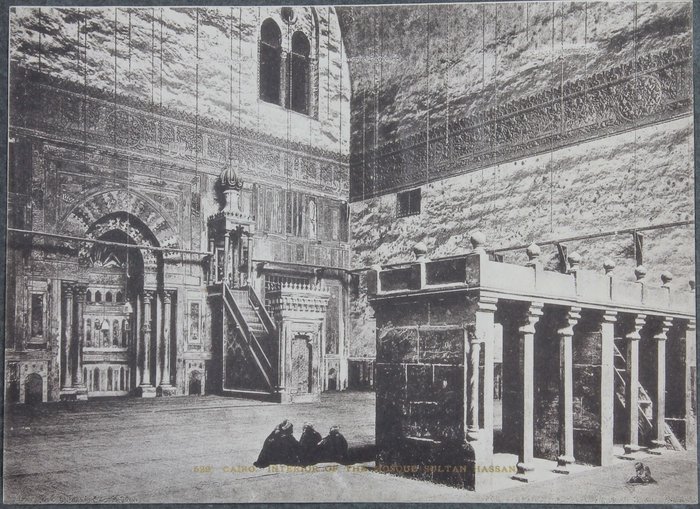
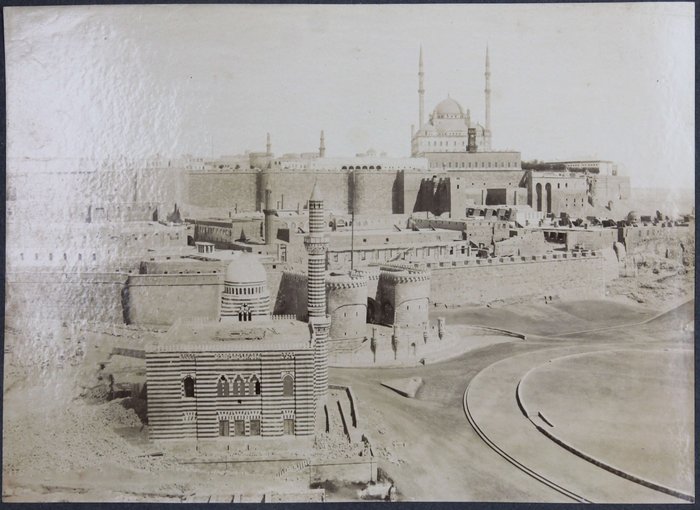
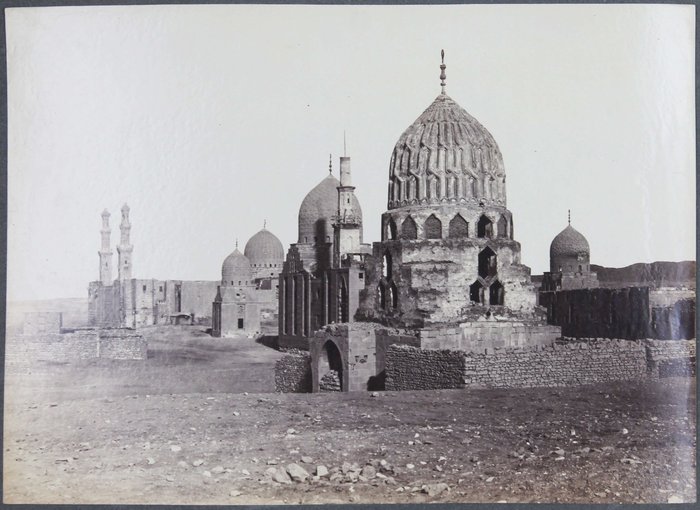
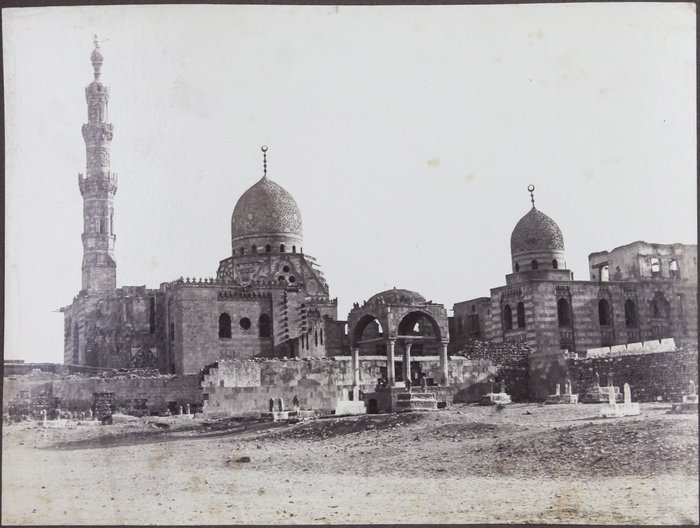
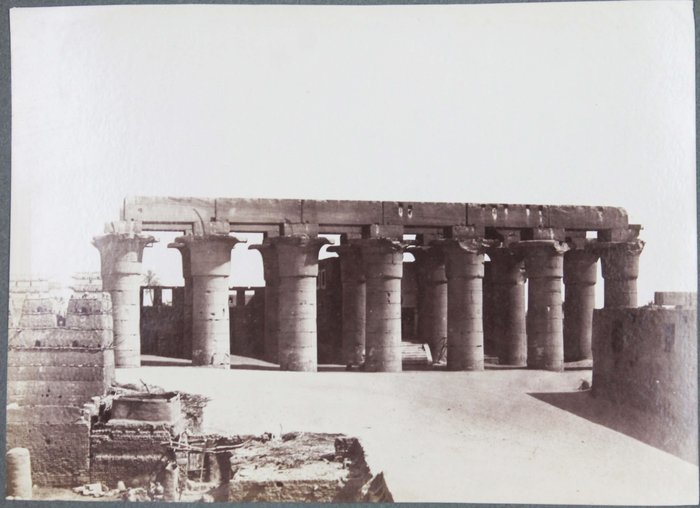
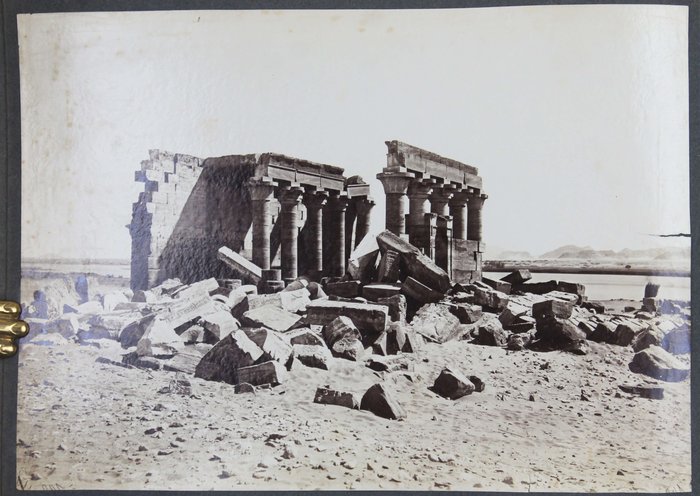
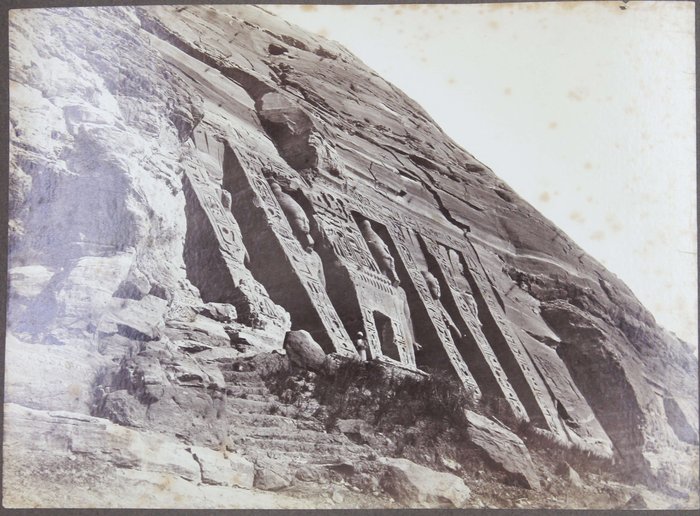
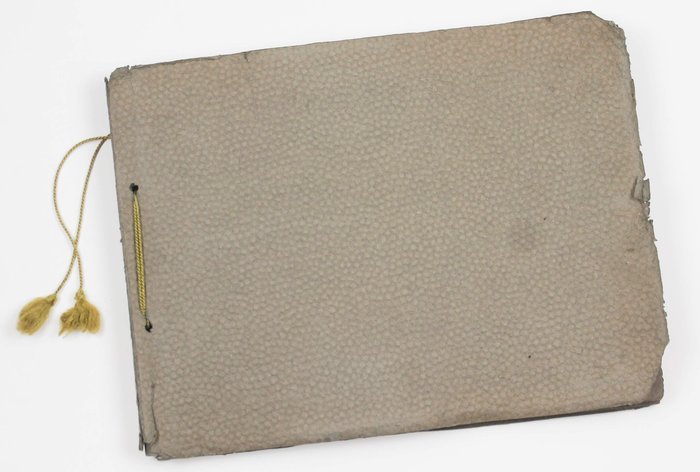
#PE3
Ca. 1860s.
Oblong Folio album (ca. 23,2x30,8 cm). 11 card stock leaves. With 23 albumen prints ca. 19,1x25,8 cm (7 ½ x 10 in) and one newspaper clipping ca. 15,8x21,8 cm (6 ¼ x 8 ½ in). No captions. Period papered boards fastened with a string. Boards with tears, but overall a very good album with strong, interesting photos.
Historically important collection of twenty-three large, excellent early photographs of iconic sites in ancient Egypt, likely taken by its pioneering photographers Wilhelm Hammerschmidt and/or Maison Bonfils photographic company. The attribution is based on two images in our collection that closely match photographs from Documents Archéologiques sur l'Égypte, Nubie, Syrie (P. Verdier de Latour, 1875), credited to Hammerschmidt and Bonfils.
The photographs from our album were likely taken in the 1860s, as the image of the Mosque of Sultan Hassan does not show the adjacent Al-Rifai Mosque, whose construction began in 1869. Many of these photos capture famous monuments in their original state, such as the Abu Simbel Temple before its relocation in the 1960s due to the flooding caused by the construction of the Aswan High Dam, and the Philae temple complex before it was submerged by the Aswan Low Dam in the early 20th century.
The photos show: Cairo: View from the Citadel with the Mosque of Sultan Hassan, Mosque of Mahmud Pasha, Sultaniyya Mausoleum - Tombs of Caliphs & Tomb of Mamluks (part of the Sultaniyya complex has disappeared, with its current remains restored in modern times; in 2023, the minaret was disassembled for a highway roundabout, with plans to relocate it), Funerary complex of Sultan Qaytbay; Luxor: Temple of Khonsu (before 2008 restoration), Grand colonnade of Amenophis (before 2001 restoration); Nubia: Temple of Al-Maharraqa (relocated in the 1960s as part of the International Campaign to Save the Monuments of Nubia), Temples at Wadi es-Sabua (relocated in the 1960s because of the Aswan Dam), Abu Simbel Temple (relocated in the 1960s), Kiosk of Qertassi (taken at its original location before being moved inland in the 1960s due to the rising waters of Lake Nasser), the approach to Philae, Trajan’s Kiosk (relocated from Philae during the 1970s rescue efforts); Nile’s First & Second Cataracts.
“Born in Berlin, Wilhelm Hammerschmidt was already a professional photographer when he settled in Cairo, Egypt, around 1860. There he established the Hammerschmidt shop, where he sold photographic materials... Hammerschmidt exhibited ten views of Egypt at the Société Française de Photographie in 1861 before becoming a member the following year. He also made costume and ethnographic studies, exhibiting those at the Exposition Universelle in Paris in 1867. Hammerschmidt also made photographs in Syria and Nubia, now Sudan” (Wilhelm Hammerschmidt / J. Paul Getty Museum online). Hammerschmidt is considered one of first photographers to produce high quality detailed images of Egypt and his travels and photographs of Upper Egypt and Nubia predate popular tourism in Egypt. He appears to have collaborated with the pioneering photo chemist Hermann Wilhelm Vogel (1834-1898) which would explain the high quality of Hammerschmidt's photographs.”
Maison Bonfils was started by Felix Bonfils (1831-1885) in Beirut in 1867 and was "to become one of the most successful photographic businesses in the world. They photographed most of the important sights in the Middle East and their views were widely distributed" (Jacobsen p. 216). Bonfils' "stock had variety enough to please all and ranged from classical landscapes and biblical scenes to ethnographic portraits” (Perez, p. 141).
Overall, historically important collection of large, excellent early photographs of iconic sites in ancient Egypt.

